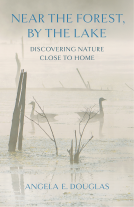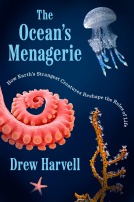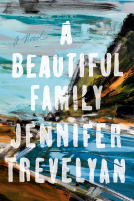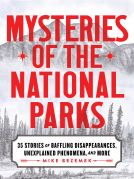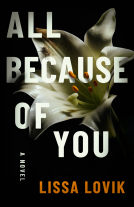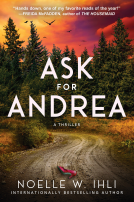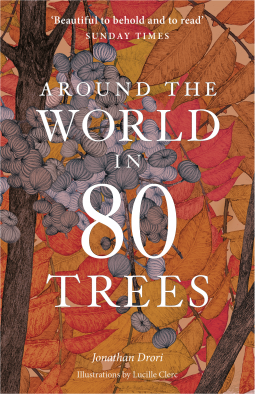
Around the World in 80 Trees
(coming soon in paperback)
by Jonathan Drori
This title was previously available on NetGalley and is now archived.
Send NetGalley books directly to your Kindle or Kindle app
1
To read on a Kindle or Kindle app, please add kindle@netgalley.com as an approved email address to receive files in your Amazon account. Click here for step-by-step instructions.
2
Also find your Kindle email address within your Amazon account, and enter it here.
Pub Date Aug 11 2020 | Archive Date Aug 18 2020
Laurence King Publishing Ltd | Laurence King Publishing
Talking about this book? Use #80trees #NetGalley. More hashtag tips!
Description
Discover the secretive world of trees in Jonathan Drori's number one bestseller. Coming soon in PAPERBACK!
Bestselling author and environmentalist Jonathan Drori follows in the footsteps of Phileas Fogg as he tells the stories of 80 magnificent trees from all over the globe.
In Around the World in 80 Trees, Jonathan Drori uses plant science to illuminate how trees play a role in every part of human life, from the romantic to the regrettable. From the trees of Britain to India's sacred banyan tree, they offer us sanctuary and inspiration – not to mention the raw materials for everything from aspirin to maple syrup.
Stops on the trip include the lime trees of Berlin's Unter den Linden boulevard, which intoxicate amorous Germans and hungry bees alike, the swankiest streets in nineteenth-century London, which were paved with Australian eucalyptus wood, and the redwood forests of California, where the secret to the trees' soaring heights can be found in the properties of the tiniest drops of water.
Each of these strange and true tales – populated by self–mummifying monks, tree-climbing goats and ever–so–slightly radioactive nuts – is illustrated by Lucille Clerc, taking the reader on a journey that is as informative as it is beautiful. The book combines history, science and a wealth of quirky detail – there should be surprises for everyone.
Perfect for fans of Peter Wohlleben's The Hidden Life of Trees, this new book will certainly whet the appetite of any tree lover to take an around–the–world trip, or simply visit your local botanic garden. The perfect travel guide for nature enthusiasts.
Praise for Around the World in 80 Trees
"An arboreal odyssey"
– NATURE
"An irresistible mix of science, culture, botany, history and vicarious travel"
– SYDNEY MORNING HERALD
"Reads like a love song to the natural world, brimming with ancient anecdotes contained within the earth"
– CULTURE TRIP
"One of the most quietly beautiful books of the year"
– DAILY MAIL
A Note From the Publisher
You can find out more about the book on social media by searching #80Trees.
Advance Praise
"This is the best love letter to trees I have ever read. Had I written it myself, I would die happy"
- Sir Tim Smit, Founder of The Eden Project
"I have loved trees all my life. It's fascinating to learn how, across the world, they have inspired people in much the same way, and to understand the key role they play, not just in our lives, but life as a whole"
- Dame Judi Dench
"This is the perfect tree book, with beautiful illustrations. A must for any tree lover, professional or amateur, who wants to learn more about 80 inspirational trees from around the world"
- Tony Kirkham, Head of the Arboretum at Kew
"Full of new ideas and wonderful stories about the trees that helped shape us, I really loved this entertaining and erudite world journey"
- Beccy Speight, Chief Executive, The Woodland Trust
"Nature writing at its best, skilfully weaving science with fascinating folklore and the sheer wonder of trees"
- Professor Sir Charles Godfray CBE FRS
Marketing Plan
INDIE NEXT NOMINATIONS
If you are an ABA member bookseller, we hope you'll consider this title for an Indie Next Nomination. The deadline to submit for the August list is June 2, 2020.
https://www.bookweb.org/indie-next-list-nominations
Available Editions
| EDITION | Paperback |
| ISBN | 9781786276063 |
| PRICE | $19.99 (USD) |
Featured Reviews
 Rosemary S, Librarian
Rosemary S, Librarian
Divided into regions of the world, Drori’s book takes a unique look at history, science and botany through the eyes of trees, the sentinels that have stood in silent witness to human history. Accompanied with beautiful illustrations this book will please nature and history lovers alike
This book is absolutely gorgeous. The illustrations that accompany the individual chapters are beautiful and soft. Each chapter is for a specific tree and it has an interesting combination of information ranging from where the tree originated, cultural importance and history, and other facts and anecdotes. It also discusses how climate change is affecting the trees, which is quite important and timely now. It was also interesting looking at the different uses that each tree has or has had.
Thank you so much to Netgalley and Laurence King Publishing for giving me a chance to read this in exchange for an honest review.
 Bill C, Reviewer
Bill C, Reviewer
Around the World In 80 Trees is a wonderful collection of effectively concise “portraits” of trees from around the world (every continent except for Antarctica). Full of fascinating details, each vignette takes up 1 or 2 pages discussing various aspects of the tree: its botanical facts regarding seeds, growth, etc.; its cultural context; its various uses; how it connects to other trees or is part of an ecosystem of weather, animals, and insects; and at times some tidbits of history. Each portrait is accompanied by absolutely lovely drawings; truly exquisite in detail and coloring they themselves are worth the price of admission. Some of the information might be familiar (that willow trees used as natural healing for instance led to the development of aspirin), but everyone will find something new here, such as why the Norway spruce was so prized amongst makers of high-quality violins. And appropriately, or perhaps ironically, it’s a book that should be enjoyed in its physical wood-pulp form and not electronically, as the beautiful nature of the illustrations are lost. It’s a browsers delight and highly recommended.
 David W, Media/Journalist
David W, Media/Journalist
Trees are gifts. Just figure out what their special features are, and you can keep the gifts coming. The gifts can be as simple as shade, as complex as medicine, as practical as boards and posts or as supportive as fruits and nuts. And that’s just for humans. In Around the World in 80 Trees, Jonathan Drori demonstrates a true passion and appreciation of those gifts, as he describes 80 of them by geographical region. He describes the, what’s unique about hw they work and stories of how they fit in.
The text is accompanied by exquisite color drawings by Lucille Clerc which are far superior to photographs. They highlight what Drori writes about in closeups of seeds or fruits in various stages, roots, canopies or trunks. For boxwoods, there is a complex French garden. For alders, there is Venice. Drori uses both sides of the page, differently for every tree, giving the layout nice variety.
There are trees so dense they sink rather than float, trees that only grow in saltwater-soaking sands, and trees that hold their seeds tightly sealed in wax until there is a forest fire below them. One tree holds its seeds in pods that explode with such violence the seeds fly off at 150 mph (the sandbox, Costa Rica).
Some to remember:
Linden trees are limes. Aphids live in them and drop honeydew on the ground – or on parked cars, leaving that famous sticky mess. It’s not the tree’s doing. Bees get drunk on the blossoms, and can often be seen stumbling around on the ground beneath them. People don’t act quite as badly, but are still smitten (with each other) in spring by the fragrance of the blossoms.
The argan of the Mediterranean has a fruit so tempting to goats that they climb up the trees and out onto the branches to get at it. The oil from it is used in creams, cosmetics and cooking, giving employment to about three million – people.
Nordic spruce grows so slowly its rings are tiny, giving the wood great strength while remaining light. That is why they are used in violins, cellos and basses (notably Stradivarius). Their solidity produces the best vibrations, aka sound. The wood is so dense it takes 10-50 years for the wood to dry. The longer you can wait, the better the sound will be.
Alder is waterproof when totally submerged. Venice is built on it: thousands of poles, carved to a point and driven into the mud. Its charcoal makes the best gunpowder, sending balls faster harder and farther. It even burns hotter, enabling ironworks.
Beech trees can survive lightning strikes because water runs down their smooth bark onto the ground. Unusually, the bark expands as the tree grows, keeping the surface smooth. On most other trees, the bark splits as the tree grows, allowing water and insects to invade the interior.
Coco-de-Mer is native to the Seychelles only. Its coconut weighs 65 pounds, the heaviest seed there is. Imagine a bag of cement falling from the top of a tree. After it rots, the seed sends out roots 15 feet away so as not to interfere with the mother tree.
The gutta-percha tree of Borneo turned out to have latex inside the trunk and the leaves that could be a sealant. Werner von Siemens invented a process to coat transoceanic cables with it and prevent the salt water from destroying the copper wires inside. He produced a quarter million miles of cable for telegraph systems.
Mangrove trees are unique in that their seeds germinate and grow roots while still growing on the tree. They fall like darts and anchor themselves in the sand, firmly enough to withstand tides. The tree is a desalination plant, purifying the salt water as it is sucked up towards the leaves by the sun evaporating moisture from them. They can live only in the narrow band of territory between the mean sea level and high tide, and so are threatened by rising seas.
The giant redwoods of California grow to what turns out to be theoretical maximum height for trees – 400 feet. Any taller and gravity would overtake water’s cohesion properties and the crown of the tree would dry up, killing the tree.
You can read Around the World in 80 Trees as a reference book, looking up trees you’ve heard about or what is native to different countries. Or, you can read it as a regular book, and the astounding variety of strategies that plants took on fairly jump off the page. From having pollinators tunnel through fruit to spikes and spines and various poisons in the bark and leaves, trees are far more varied beings than we give them credit for.
One word of advice, do not get the Kindle version. The few drawings that made into that format have been reduced to thumbnails to fit the small screen. You miss fully half the book. Stick to paper – a gift from trees.
David Wineberg
 Anjana D, Reviewer
Anjana D, Reviewer
This is one of those books that definitely catch your eye as you go past. It is probably best as a large coffee table version but I had to be contented with an e-version which has a ticking clock before it expires. This did not effect my review in too many ways, but I might have enjoyed it more in actual physical format.
The author gives us detailed information about trees from various parts of the world. As a layperson with only the power to gawk at said trees and marvel at their beauty, I cannot even tell most of them apart. This collection, therefore, had a lot of tidbits that I can use to entertain audiences if they are so inclined. I might forget most of it with passing time but the joy of reading about them for the first time will linger. I really liked the illustration but thought that actual pictures might have helped me understand and retain more information (again, the illustrations are pretty) for the future.
If you are even slightly interested in nature and or how civilizations around the world could have been linked in the past, there is a little for everyone in this book. If I ever go on a buying spree in the near future I will keep this book in mind.
Around the World in 80 Trees takes us on an enjoyable whirlwind adventure through individual species of trees as found in their native habitats. From the London Plane in England, we travel through Europe, the Mediterranean, Africa, Asia, and Oceania to the Americas and Caribbean, meeting arboreal majesties such as the Alder, Cedar of Lebanon, Frankincense, Banyan, Yoshino Cherry, Upas, Kauri, Blue Jacaranda, Lignum Vitae, Coastal Redwood, Tree of Heaven, and more.
For each tree we are treated to short one or two page essay which imparts information gleaned from botany and folklore, history and geography, family and society. Each short piece is accompanied by gorgeous artwork which goes to further deepen the reader’s experience of the trees. I enjoyed reading about the trees I recognised as much as I enjoyed discovering new trees to explore, and in the back of the book are additional reading lists and resources for further exploration, along with a comprehensive index.
The e-ARC I received was very pretty but I suspect the illustrations may lose something in an monotone e-reader. Overall, though, this is a love story to trees, and I enjoyed every moment of it. Sometimes the essays were a little short for my liking but I am grateful for the resources list, which offers further possibilities. And, of course, if you want to know more about trees then the easiest way to do so is to go and find them in nature, and experience their beauty firsthand.
I received an e-ARC from the publisher, Laurence King Publishing Ltd, through NetGalley in exchange for an honest review.
 Bonnye Reed F, Reviewer
Bonnye Reed F, Reviewer
Jonathan Drori brings us an excellent book for tree lovers. He has broken them down into just 80 families and they make fascinating reading. Some we are all familiar with - The Romans brought the Elm to western Europe to support and train their vines. From England, it spread, mostly by cuttings, all over the world. Thus all were genetically vulnerable to Dutch Elm Disease - which originated in the Orient but was first identified in the Netherlands. The 1970's worldwide spread of Dutch Elm disease impacted hundreds of millions of Elm trees all over the world. The ancient Monkey Puzzle tree, native to Chile, was brought to England in 1795 and thus spread. It is now a featured tree in almost every country but an endangered species in Chile. South America was rich with unique and useful trees. Peru was the home of the Cinchona or Quinine tree, which changed the history of the world when it was discovered (in England!) to prevent and cure mosquito-transmitted malaria. Then there are 60 separate varieties of chestnuts in Corsica while American chestnut trees were destroyed in the early 20th century by widespread blight. Baobab can live for thousands of years, with it's largest spreading parts underground.
Some of the most remarkable trees in our world are hybrids that were developed accidentally and formed a perfect functionality to fit problem areas where trees simply couldn't grow. The London Plane tree in London, for example. A cross between the American Sycamore and the Oriental Plane tree, The London Plane tree sheds bark in small flakes all the time, sloughing off the soot that blanketed these industrialized cities.
And then there is the layered Norway Spruce in the Dalarna area of Sweden that has a root system with remnants that carbon date to 9,500 years ago. "Old Tjikko" as he/she is known. Without the Norway Spruce, we would all be sad - the majority of soundboards in the best string instruments the world has to offer are Norway Spruce. This slow-growing wood is perfect to transmit intense vibration to the instrument's strings. And what would Southern California be without Argentina's export, the Jacaranda? Would that she would grow in the desert! Or baseball bats and my pancakes, without that North American native, Sugar Maple?
I found Around the World in 80 trees fascinating, as did my family, who normally HATE when I feel compelled to read aloud. It is a book tree huggers must read.
I received a free electronic copy of this intriguing look at the most interesting trees of the world on March 17th, 2019 from Netgalley, Jonathan Drori, and Laurence King Publishing. Thank you all for sharing your hard work with me.
🌳 🌳 🌳 🌳 🌳
What a stunning ode to nature, told through the most beautiful illustrations and stories that make the world come alive! The author reveals the secret of trees ... from lime trees that line Berlin's Unter den Linden boulevard to sacred Banyan trees in India, California’s storied redwoods, and London’s eucalyptus-paved avenues. Plus tree-climbing goats, radioactive nuts, self-mummifying monks. It’s a weird wonderful travelogue for outdoor enthusiasts and lovers of well-told tales! 5/5
Pub Date 28 May 2018.
Thanks to the author, Laurence King Publishing Ltd. and NetGalley for the review copy. Opinions are mine.
#80trees #NetGalley
I’m not sure what I was expecting when I picked up Around the World in 80 Trees by Jonathan Drori but it has far exceeded my expectations and I have every intention of rereading it! It’s a fantastic combination of information, anecdotes, humour and environmental concerns.
Each tree has it’s own profile highlighting its key aspects, history and impact on the world. I chuckled at the description of “befuddled bees” beneath the Lime tree drunk on the nectar. I wondered at the use of cork on the roads of London to ease the travel of horses and carriages. I now burble over with these and many more fabulous facts about trees!
However, I am shocked at the damage humans can do to our environment. Several of the trees discussed have suffered drastically at the hands of human greed. They now, of course, are under pressure from global warming.
In summary, I came away in awe of the amazing way of nature. Each tree has been so beautifully designed and created by God and it works harmoniously with all around it. I loved this book from cover to cover and highly recommend it! It’s five out of five on en-JOY-ment.
A beautiful book for tree lovers. Great illustrations and I love the author's stories. I really learned some new things about my favourite trees!
 Alexandra R, Reviewer
Alexandra R, Reviewer
Very nice and interesting. Like the title says, it does give a variety of trees for the different areas around the world. Nice sketches of the trees. If you love trees and nature this is a great read to pick up.
Around the world in 80 trees is a delightful compendium of trees from around the globe, meant to be enjoyed not in one sitting but occasionally, one entry at a time. Since I'm flipping through it as a digital edition, I couldn't completely enjoy the marvel of the book's beauty and Lucille Clerc's charming illustrations. The book features the weird (Strawberry tree from Ireland), the wonderful (Traveller's tree from Madagascar) and the curious (wild apple from Kazakhstan). Though it's by no means a comprehensive encyclopedia of the world's trees, it's nevertheless an excellent sampling of trees from around the world, perfect for botany / tree lovers and general readers alike.



